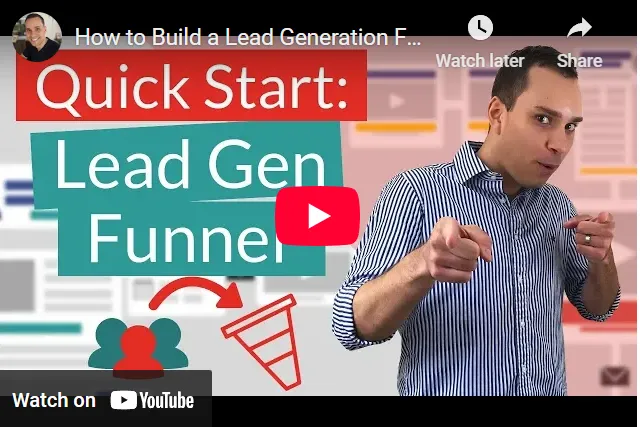How to Build a Patient Lead Generation Funnel for Your Podiatry Practice

In the current competitive healthcare environment, podiatry practices must adopt a proactive approach to attract and retain patients. A well-structured patient lead generation funnel is essential for achieving this objective. This guide will provide a comprehensive overview of the process involved in creating an effective funnel, from defining your ideal patients to converting leads into loyal clients. By thoroughly understanding your target audience, crafting compelling offers, and optimizing your landing pages, you can significantly enhance your practices visibility and patient acquisition efforts. Engage with this guide to explore the steps that can transform your practice in the competitive healthcare industry.
Key Takeaways:
- Define your target audience and their pain points to effectively tailor your marketing efforts.
- Create a compelling offer that solves your target audience’s pain points and showcases the benefits of your services.
- Utilize various methods such as social media, digital marketing, and email marketing to drive traffic to your landing page and convert leads into patients, while optimizing for mobile and local searches.
Why Is a Patient Lead Generation Funnel Important for Podiatry Practices?
A well-structured patient lead generation funnel is essential for podiatry practices, as it systematically attracts, engages, and converts potential patients into loyal clients.
By utilizing digital marketing strategies, including ad creative and mobile optimization, and optimizing for local SEO, podiatrists can effectively reach their target audience, particularly among the geriatric population and individuals managing chronic conditions such as diabetes.
This approach not only improves patient acquisition but also enhances the practice’s online presence through platforms such as Google Business Profile and Healthgrades. Moreover, positive online reviews on platforms like Google, Healthgrades, Yelp, and ZocDoc can play a significant role in influencing the decisions of prospective patients, while the availability of telehealth options offers added convenience and accessibility.
Step 1: Define Your Target Audience
Defining the target audience is a fundamental step in developing a successful lead generation strategy in podiatry, especially when addressing the diverse needs of various patient groups, such as the geriatric population and individuals with diabetes.
A clearly defined audience enables podiatrists to tailor their foot care services, emphasizing their unique selling proposition (USP) and marketing initiatives effectively, ensuring alignment with the needs of potential patients and improving local search outcomes.
Understanding the demographics and preferences of ideal patients can significantly enhance patient acquisition rates, particularly in a competitive landscape where lead quality is crucial.
1.1 Who Are Your Ideal Patients?
Understanding the characteristics of ideal patients is crucial for effectively tailoring foot care services and developing marketing campaigns that resonate with those individuals. In the field of podiatry, ideal patients may encompass the geriatric population, individuals with diabetes, and those seeking treatment for sports injuries or conditions such as ingrown toenails.
Identifying these demographic groups allows for the recognition of common characteristics, including age-related concerns, chronic health issues that impact foot health, and specific lifestyle choices that may lead to foot problems.
For example, older adults frequently encounter mobility challenges, while athletes may require preventive care to avoid injuries. Individuals with diabetes necessitate specialized attention to prevent potential complications, which is often emphasized by the American Podiatric Medical Association (APMA) and the American Board of Podiatric Medicine.
By comprehending these traits, practitioners can formulate targeted communication strategies that address the specific challenges faced by these groups, thereby enhancing patient engagement and ultimately improving health outcomes.
1.2 What Are Their Demographics?
Demographics play a crucial role in informing the marketing strategies of podiatrists by providing valuable insights into the characteristics of their target audience, including factors such as age, gender, income, and geographic location. For instance, the geriatric population frequently requires specialized foot care services, necessitating that practices adapt their offerings to meet these specific needs.
A comprehensive understanding of patient demographics enables healthcare providers to identify particular foot care requirements and tailor their services accordingly, thereby ensuring optimal patient satisfaction. For example, younger patients may prioritize concerns related to sports injuries or fashion-related foot issues, while older individuals may experience challenges such as neuropathy or complications arising from diabetes.
Additionally, gender differences can impact conditions such as plantar fasciitis or bunions, underscoring the importance of developing targeted marketing campaigns. By effectively leveraging demographic data, podiatrists can create customized messages that resonate with distinct patient groups, ultimately enhancing patient engagement, improving health outcomes, and promoting their services more effectively.
1.3 What Are Their Pain Points and Goals?
Identifying the pain points and goals of the target audience is essential for developing effective foot care solutions that resonate with patients seeking podiatry services. Common pain points may include the management of chronic conditions such as diabetes, the prevention of sports injuries, or the treatment of specific foot health concerns, including bunions or ingrown toenails.
By gaining insight into these issues, practitioners can customize their offerings and marketing strategies to align with the diverse experiences of different patient groups. For example, recognizing that diabetic patients may require specialized care directs attention to the development of comprehensive preventive programs, while athletes may benefit from focused injury prevention workshops.
Engaging with patients to understand their objectives, whether related to improved mobility or pain relief, ensures that service delivery and patient interactions remain relevant and effective. This patient-centered approach not only enhances overall satisfaction but also fosters loyalty, as individuals feel recognized and supported throughout their foot care journey.
Step 2: Create a Compelling Offer
Developing a compelling offer is a fundamental component of effective patient acquisition strategies within podiatry practices, as it captures the attention of potential patients and motivates them to engage with the services provided.
By delivering value through free consultations, educational resources, or discounts on foot care services, podiatrists can successfully distinguish themselves in the competitive healthcare landscape and attract a consistent flow of prospective patients.
2.1 What Is Your Free Offer?
A well-structured complimentary offer serves as an effective tool for lead generation in podiatry practices, attracting potential patients. Examples of such offers may include:
- Free foot health assessments
- Educational webinars on diabetes management
- Downloadable guides on preventative foot care
By providing these valuable resources, podiatry practices can capture the attention of their target audience while establishing trust and credibility within the community. For example, offering a complimentary 30-minute consultation allows individuals to experience personalized care, thereby encouraging them to provide their contact information in exchange for expert insights.
Similarly, a webinar addressing common foot issues can engage viewers and motivate them to register for future sessions or newsletters.
Ultimately, these strategic initiatives not only enhance patient acquisition but also foster enduring relationships that contribute to the long-term success of the practice.
2.2 How Does Your Offer Solve Your Target Audience’s Pain Points?
The proposed offer should directly address the pain points identified within the target audience, providing tangible solutions that enhance their foot care experience and overall health. For instance, if the audience includes individuals with diabetes, offering specialized consultations focused on diabetic foot care would be particularly appealing.
By providing educational workshops tailored for seniors, podiatrists can empower the geriatric population with knowledge regarding proper foot hygiene and common conditions such as arthritis that may affect their mobility.
Young athletes can greatly benefit from expertise in injury prevention and recovery strategies, ensuring they maintain peak performance while safeguarding their feet from sports injuries.
Additionally, families seeking pediatric podiatry services can rely on the practice for guidance on proper footwear and customized orthotics that adapt to their childrens growing needs.
By emphasizing a comprehensive approach that addresses these diverse concerns, the practice can resonate with various demographics seeking effective and compassionate foot care solutions.
2.3 What Are the Benefits of Your Offer?
Clearly articulating the benefits of your services is crucial for motivating potential patients to engage with your podiatry practice, as it delineates the value they can expect from your care. These benefits may encompass improved foot health, access to specialized foot care guidance, and the convenience of telehealth consultations for individuals facing mobility challenges.
Patients will value personalized treatment plans that are specifically tailored to their unique needs, which can significantly enhance their overall quality of life. By prioritizing pain relief and preventive care, your practice not only addresses immediate concerns but also promotes long-term foot health.
Furthermore, providing educational resources on foot hygiene, foot care, and injury prevention gives the power to patients to make informed decisions, ultimately reducing the risk of complications, especially among the geriatric population and those with diabetes.
Leveraging modern technology and effective outreach strategies, including digital marketing and local SEO, will facilitate a strong connection between your podiatry services and the community, ensuring that comprehensive foot care remains accessible and convenient for all.
Step 3: Design a Landing Page
Designing an effective landing page is a critical step in converting potential leads into patients for podiatry practices, as it represents the initial point of interaction for visitors seeking information about the services offered, such as sports injuries and ingrown toenail treatments.
A well-optimized landing page should be visually appealing, easy to navigate, and fully optimized for mobile devices. This approach ensures that the user experience meets the expectations of today’s digitally savvy consumers and adheres to best practices in mobile optimization.
3.1 What Is a Landing Page?
A landing page is a specialized web page created with a specific objective, typically aimed at capturing leads and providing information about the services offered by podiatry practices. Unlike general website pages, landing pages concentrate on a singular goal and direct visitors toward a call-to-action, making them crucial for effective lead generation within the healthcare industry.
These pages are designed to align closely with the needs and inquiries of potential patients, often featuring targeted content, compelling visuals, and streamlined navigation. In contrast to standard web pages that deliver comprehensive information about a practice, landing pages focus on a particular service, such as diabetic foot care, custom orthotics, or telehealth options.
This targeted approach creates a tailored experience that not only informs visitors but also encourages them to take specific actions, such as scheduling an appointment or requesting further information.
This focused strategy not only enhances the user experience but also significantly improves conversion rates, highlighting the essential role that landing pages play in a podiatrist’s marketing strategy.
3.2 What Elements Should Be Included in Your Landing Page?
To maximize the effectiveness of a landing page, several key elements must be meticulously incorporated to ensure it serves as a robust tool for patient acquisition in podiatry practices. Essential components include compelling headlines, engaging visuals, succinct descriptions of services, and prominent calls-to-action that encourage visitors to take the next step.
Along with these foundational aspects, the inclusion of testimonials from satisfied patients can significantly enhance the practice’s credibility, thereby facilitating trust among potential clients. The strategic application of color schemes that adhere to healthcare standards can create a calming effect, while intuitive navigation ensures a seamless user experience.
Furthermore, providing easy-to-find contact information and booking options not only facilitates patient inquiries but also drives conversions. Employing SEO-friendly content will enhance search visibility, which is crucial for attracting local patients seeking podiatric solutions online.
3.3 How Can You Make Your Landing Page Stand Out?
Enhancing the visibility of a landing page is crucial for capturing the attention of potential patients and distinguishing a podiatry practice within a competitive digital landscape. Utilizing tools like Google Business Profile and effective ad creative can significantly boost visibility.
The integration of innovative design elements, compelling headlines, and high-quality imagery can significantly elevate the visual appeal of the landing page.
Furthermore, the inclusion of testimonials and online reviews on platforms such as Healthgrades, ZocDoc, and Yelp serves to establish trust and credibility among prospective patients.
To further improve the visitor experience, employing strategies such as A/B testing enables practitioners to evaluate which design features resonate most effectively with users, thereby optimizing conversion rates.
Additionally, personalization techniques such as customized content that addresses specific patient needs or demographics can leave a lasting impression.
Incorporating telehealth options not only meets the increasing demand from patients but also aligns with contemporary healthcare trends.
By seamlessly integrating these components, practices can develop a comprehensive digital presence that attracts and retains potential patients, ultimately enhancing patient acquisition outcomes.
Step 4: Drive Traffic to Your Landing Page
Driving traffic to a landing page is essential for converting leads into patients, and several effective strategies are available for podiatrists to achieve this objective.
Implementing digital marketing techniques, such as local SEO to improve visibility in local search results, engaging social media marketing campaigns, and targeted email marketing, can significantly enhance traffic to the landing page. Utilizing platforms like Google, RateMDs, and WebFX can further aid in driving traffic.
4.1 What Are Some Ways to Drive Traffic to Your Landing Page?
Numerous effective strategies exist for podiatrists to enhance traffic to their landing pages, ensuring potential patients are aware of their services. Implementing search engine optimization (SEO) can significantly improve visibility in local searches, while pay-per-click (PPC) advertising allows for targeted outreach to specific demographics.
Along with these techniques, content marketing plays a crucial role in attracting and engaging a relevant audience. By developing informative blog posts or articles that address common foot health concerns, practitioners can establish themselves as trusted experts in their field, as recognized by the American Podiatric Medical Association (APMA) and the American Board of Podiatric Medicine.
Furthermore, social media promotion is essential; sharing patient testimonials and health tips across various platforms can markedly increase reach and engagement. Forming partnerships within the healthcare community, such as collaborating with local fitness centers or health clinics, can also cultivate referral networks, thereby directing new visitors to their website. Highlighting your unique selling proposition (USP) can further differentiate your practice in the competitive landscape.
Each of these methods collectively contributes to the establishment of a robust online presence.
4.2 How Can You Use Social Media to Promote Your Landing Page?
Social media platforms represent significant avenues for promoting landing pages and enhancing patient acquisition efforts within podiatry practices. By developing engaging content, sharing informative articles, and utilizing targeted advertising, podiatrists can effectively direct traffic to their landing pages.
To fully leverage the potential of these platforms, it is crucial to establish a comprehensive social media strategy. Scheduling posts to coincide with optimal engagement times can markedly enhance visibility and interaction.
Engaging actively with followers through comments and direct messages cultivates a sense of community and fosters trust. Encouraging patients to share their experiences and tag the practice can yield valuable user-generated content, highlighting authentic testimonials.
Additionally, employing branded hashtags and organizing contests can further augment visibility, motivating more individuals to visit the landing page for valuable insights related to podiatry.
4.3 How Can You Use Email Marketing to Promote Your Landing Page?
Email marketing continues to be an effective strategy for promoting landing pages and facilitating patient acquisition within podiatry practices. By developing targeted email campaigns that showcase compelling offers and valuable content, practitioners can engage existing patients while also reaching new prospects.
To enhance email marketing efforts, it is advisable to implement strategies such as building a robust email list through various channels, including website sign-ups and social media interactions. Segmenting the audience based on demographics and interests allows for a more personalized approach, ensuring that the appropriate messages are delivered to the right individuals.
Creating engaging content that addresses the specific needs and concerns of the audience is essential. This content may include informative articles, patient testimonials, exclusive promotions, and insights from trusted sources like the U.S. Bureau of Labor and Statistics, encouraging engagement.
Additionally, incorporating clear calls to action and visually appealing elements will further motivate recipients to explore the landing page, ultimately contributing to improved patient acquisition rates.
Step 5: Convert Leads into Patients
Converting leads into patients represents the primary objective for podiatry practices, and the implementation of effective follow-up strategies is essential for achieving this goal.
By nurturing leads through personalized communication, timely follow-ups, and addressing their concerns or inquiries, podiatrists can significantly improve their patient conversion rates.
5.1 What Is Your Follow-Up Strategy?
A well-defined follow-up strategy is essential for converting leads into patients within the field of podiatry, ensuring that no opportunity to engage potential patients is overlooked. This strategy may encompass timely follow-up emails, phone calls, or text messages tailored to the specific needs of each lead.
By implementing various follow-up techniques, practitioners can significantly enhance patient engagement. For example, utilizing scheduled reminders can keep potential patients informed and motivate them to schedule appointments.
Best practices indicate that follow-ups should occur within 24 to 48 hours of initial contact to maintain momentum; however, incorporating a personalized touch can greatly impact outcomes.
Integrating technology, such as automated systems that track interactions and notify providers when follow-ups are due, can streamline this process. This approach not only saves time but also ensures that communication remains relevant and informative, thereby strengthening the relationship with potential patients and increasing conversion rates.
5.2 How Can You Nurture Your Leads and Build Trust?
Nurturing leads and establishing trust are critical components in converting potential patients into loyal clientele for podiatry practices. This can be accomplished through personalized communication, the provision of valuable content, and a consistent demonstration of expertise in foot care.
Implementing effective follow-up strategies can significantly enhance patient relationships. For instance, practitioners may consider sending regular newsletters that provide insights on foot health, preventive care tips, and updates on the latest treatment options.
Engaging with potential patients on social media platforms not only increases visibility but also demonstrates a commitment to community health, fostering a sense of connection. Reliability in both online interactions and face-to-face encounters cultivates a trustworthy presence, reassuring prospects that they are selecting a reputable practice dedicated to their well-being.
5.3 How Can You Encourage Leads to Schedule an Appointment?
Encouraging leads to schedule an appointment is a critical aspect of the conversion process for podiatry practices, necessitating strategic approaches to effectively prompt action. Implementing clear calls-to-action, providing easy appointment scheduling options, and reminding potential patients of the benefits of timely foot care can encourage them to proceed to the next step.
To enhance the patient experience, practices may leverage technology such as online booking systems, which offer 24/7 access and allow potential patients to select convenient appointment times. Additionally, integrating automated reminders via text or email can prove beneficial in ensuring that important appointments are not overlooked.
It is also advisable to implement follow-up communications after appointments to solicit feedback and reinforce the significance of ongoing foot health care. By creating a seamless and user-friendly scheduling process, practices can substantially increase patient engagement and retention.

Frequently Asked Questions
What is a patient lead generation funnel for a podiatry practice?
A patient lead generation funnel is a marketing strategy designed to attract potential patients and guide them through the process of becoming a patient at your podiatry practice. It typically involves multiple steps and touchpoints, such as advertisements, landing pages, and email campaigns.
Why is it important to have a patient lead generation funnel for a podiatry practice?
A patient lead generation funnel can help increase the number of patients at your podiatry practice by attracting and converting potential patients into actual patients. It also allows you to track and analyze the effectiveness of your marketing efforts and make improvements as needed.
How do I create a patient lead generation funnel for my podiatry practice?
To create a patient lead generation funnel, you will need to first identify your target audience and determine the best channels to reach them. Then, you can create compelling advertisements and landing pages that will capture their attention and interest. Finally, you will need to have a system in place to nurture leads and convert them into patients.
What are some effective strategies to attract potential patients to my podiatry practice?
Some effective strategies to attract potential patients to your podiatry practice include creating informative and visually appealing advertisements, offering a free consultation or other valuable incentive, and partnering with other healthcare providers or local businesses to reach a wider audience.
What are some common mistakes to avoid when building a patient lead generation funnel for a podiatry practice?
Some common mistakes to avoid include not having a clear target audience or marketing strategy, not optimizing your landing pages for conversions, and not regularly tracking and analyzing your funnel’s performance. It’s also important to ensure that your website and online presence accurately represent your practice and its services.
How do I know if my patient lead generation funnel for my podiatry practice is successful?
The success of your patient lead generation funnel can be measured by various metrics, including the number of leads generated, the conversion rate from leads to patients, and the return on investment of your marketing efforts. Regularly tracking and analyzing these metrics can help you make improvements and ensure the success of your funnel.










